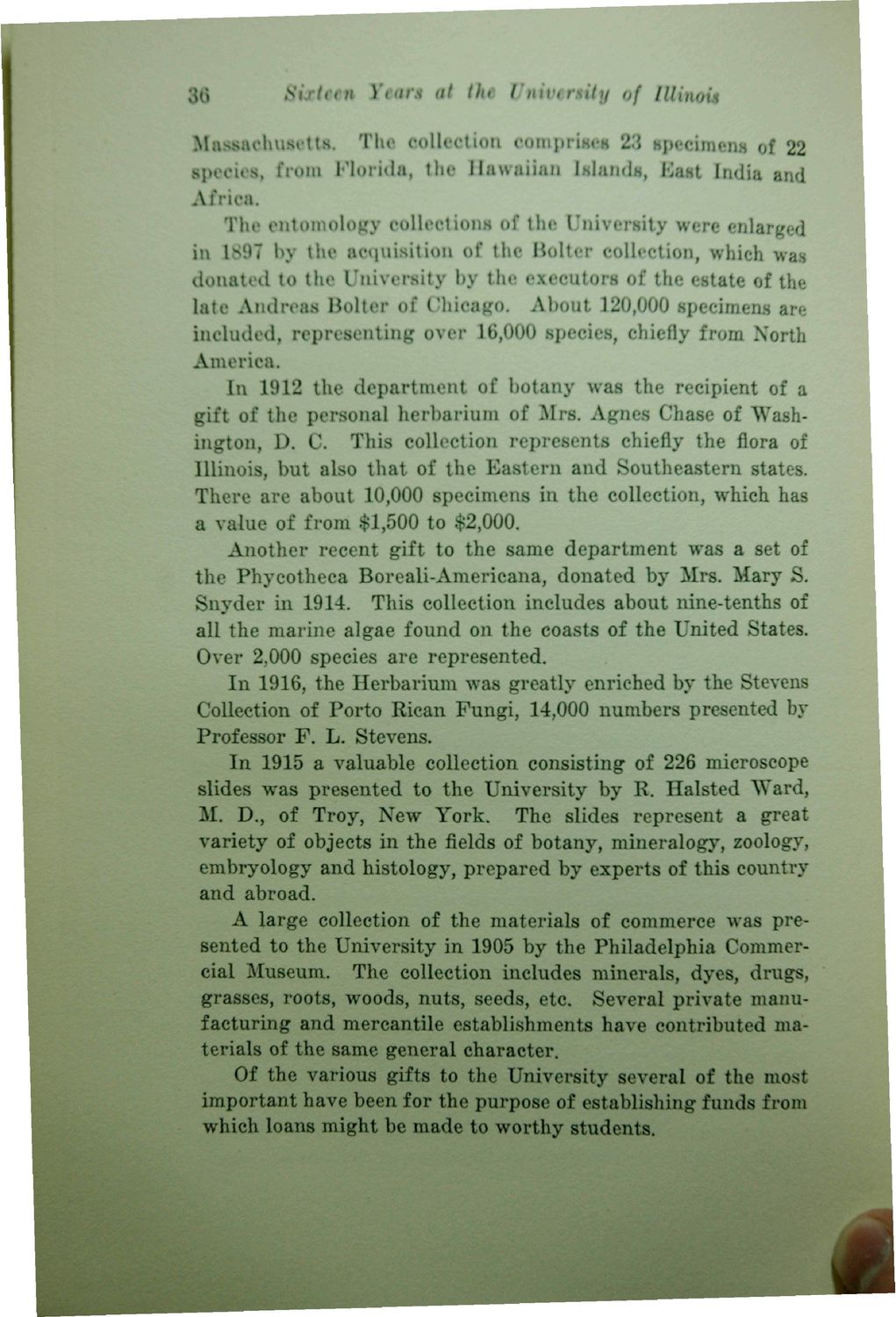| |
| |
Caption: Book - 16 Years (Edmund James)
This is a reduced-resolution page image for fast online browsing.

EXTRACTED TEXT FROM PAGE:
36 Sixteen Yean at the University of Illinois Massachusetts, The collection comprises 23 specimens of 22 species, from Florida, the Hawaiian Islands, East India and Africa. The entomology collection* of the University were enlarged in 1897 by the acquisition of the Bolter collection, which was donated to the University by the executors of the estate of the late Andreas Bolter of Chicago, About 120,000 specimens are included, representing over 16,000 species, chiefly from North America. In 1912 the department of botany was the recipient of a gift of the personal herbarium of Mrs. Agnes Chase of Washington, D. C. This collection represents chiefly the flora of Illinois, but also that of the Eastern and Southeastern states. There are about 10,000 specimens in the collection, which has a value of from $1,500 to $2,000. Another recent gift to the same department was a set of the Phycotheca Boreali-Americana, donated by Mrs. Mary S. Snyder in 1914. This collection includes about nine-tenths of all the marine algae found on the coasts of the United States. Over 2,000 species are represented. In 1916, the Herbarium was greatly enriched by the Stevens Collection of Porto Rican Fungi, 14,000 numbers presented by Professor P . L. Stevens. In 1915 a valuable collection consisting of 226 microscope slides was presented to the University by R. Halsted Ward, M. D., of Troy, New York. The slides represent a great variety of objects in the fields of botany, mineralogy, zoology, embryology and histology, prepared by experts of this country and abroad. A large collection of the materials of commerce was presented to the University in 1905 by the Philadelphia Commercial Museum. The collection includes minerals, dyes, drugs, grasses, roots, woods, nuts, seeds, etc. Several private manufacturing and mercantile establishments have contributed materials of the same general character. Of the various gifts to the University several of the most important have been for the purpose of establishing funds from which loans might be made to worthy students.
| |